What is a Low Pitched Roof?
Low-pitched roofs are an ideal choice for those seeking a unique aesthetic to adorn their homes, that also has a multitude of benefits.
Designed to be installed at a pitch between 12.5° and 22.5° , low-pitched roofs are becoming an ever popular roof choice for domestic extensions or similar builds, thanks to their instant curb appeal and anti-view-blocking properties. It is generally considered that any roof installed at a pitch of less than 10° is deemed a flat roof.
The British Standard for Slating and Tiling BS 5534 (BS 5534) sets guidance and building regulations for roof system projects and historically recommends that any roofing system using slates and tiles is installed at a minimum pitch of 20°. Lower pitches are now possible if required however, due to new product developments and improvements.
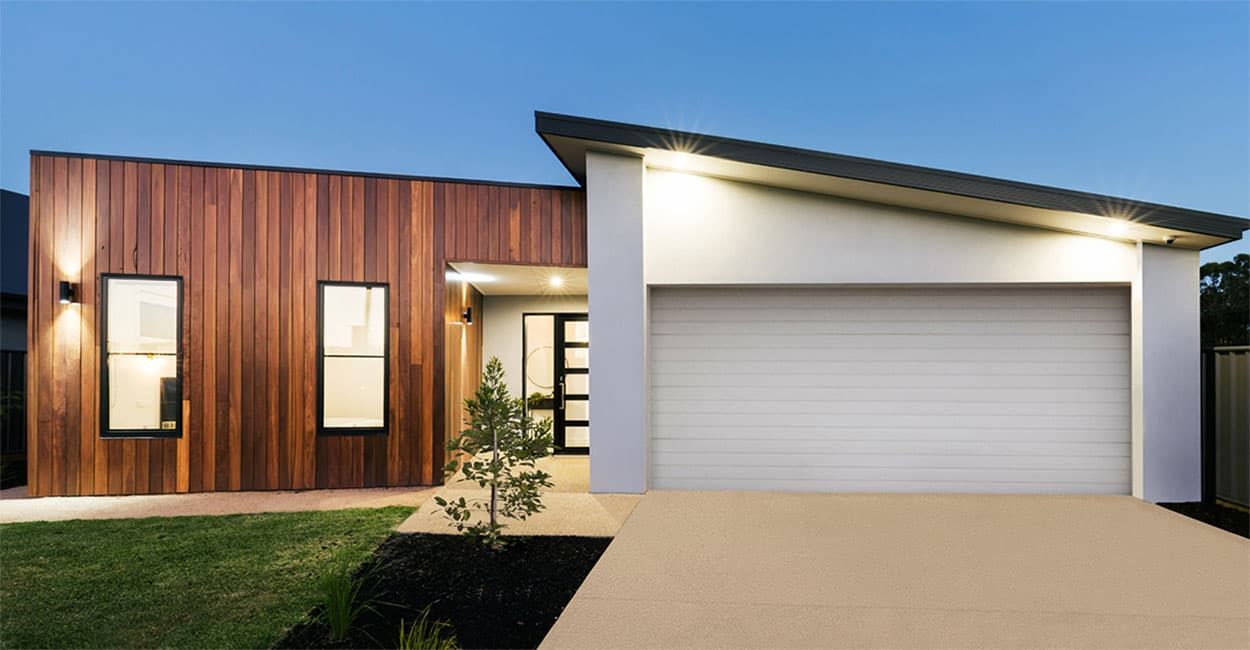
Typical Design and Construction
Low-pitched roofs are not only aesthetically appealing, making them a popular choice for architects and creative designers alike, but they also will likely require less material to install and manufacture - making them more cost-effective than standard roofing.
Typically, a low-pitch roof will sit between 12.5° and 22.5° , with some roofs being pitched as low as 10° when using an overlapping system - however, all low-pitched roof solutions depend on the material used during construction and the roofing tools/building products available.
Important considerations to bear in mind when it comes to a low-pitch roof is how effective is the water drainage. If a roof has long rafters, it will naturally also have a gentler slope for rainwater to drain from and so can cause water ingress. For added protection, increase the pitch of the roof by 1° for every half metre distance that a rafter length is over the recommended maximum rafter length.
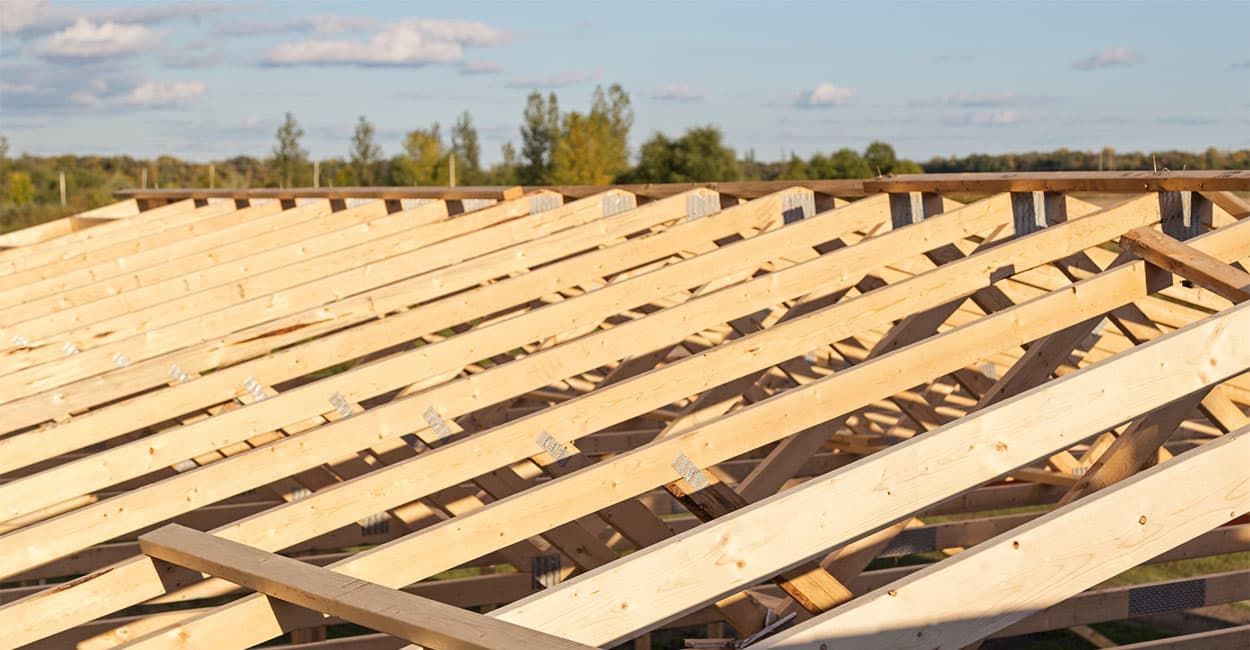
The most popular range of low-pitched roofing materials on the market used during the construction of extensions include:
-
Roofing Felt
-
Slate Tiles
-
Clay Tiles
-
Metal Roofing Sheets
-
Concrete Pantiles
-
Polypropylene (plastic) Tiles
No matter which material you are building your low-pitch roof with, one of the important considerations to keep in mind is the use of a roofing membrane beneath the roof pitch, to weatherproof it against wind-driven rain and snow.
This is because most low-pitched roofs do not have gravity working in their favour when it comes to rainwater runoff and general water drainage. A roofing membrane will prevent any liquid from entering under tiles/sheets through any capillary action
Common Uses
Low-pitched roofing is commonly used on domestic extensions, bungalows or similar smaller builds.
They are a popular choice for these types of builds because their lower profiles mean that they do not block as much sunlight from the outside space/garden when compared with higher pitched roofs, they also allow for longer views behind the building and provide a contemporary aesthetic to the build itself.
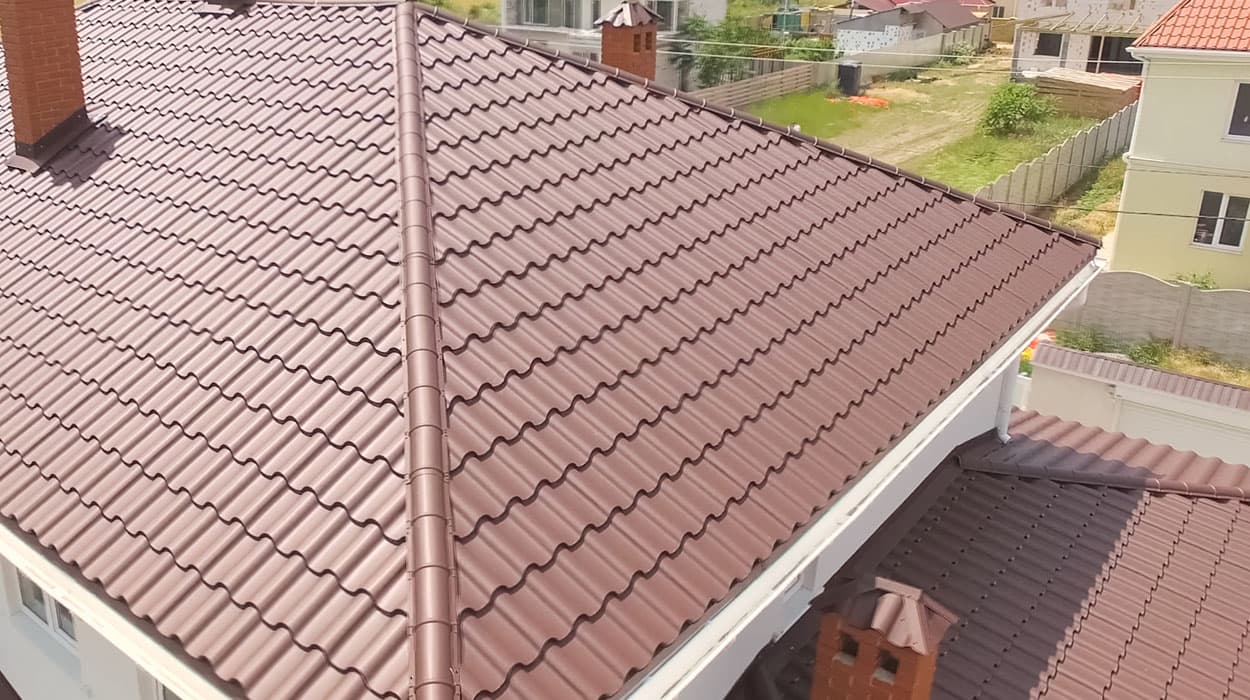
Why Choose a Low-Pitch Roof?
Choosing a low-pitch roof comes with a range of benefits when compared to homes with a higher existing roof pitch.
Generally, there are fewer materials required to manufacture the roof itself, due to the smaller surface area. This therefore requires less manpower - and so, fewer labour time costs too.
On top of this, low pitch roofing requires less upkeep than its high pitch counterparts - If roof tiles or plain tiles are used during installation, there is less gravitational pull due to the lower degree of the roof, and so over time, roof tiles are less likely to fall or become damaged from harsh weather contact.
They are a great alternative to a flat roof, allowing for water drainage and preventing water pooling/ingress which could potentially damage other parts of your property.
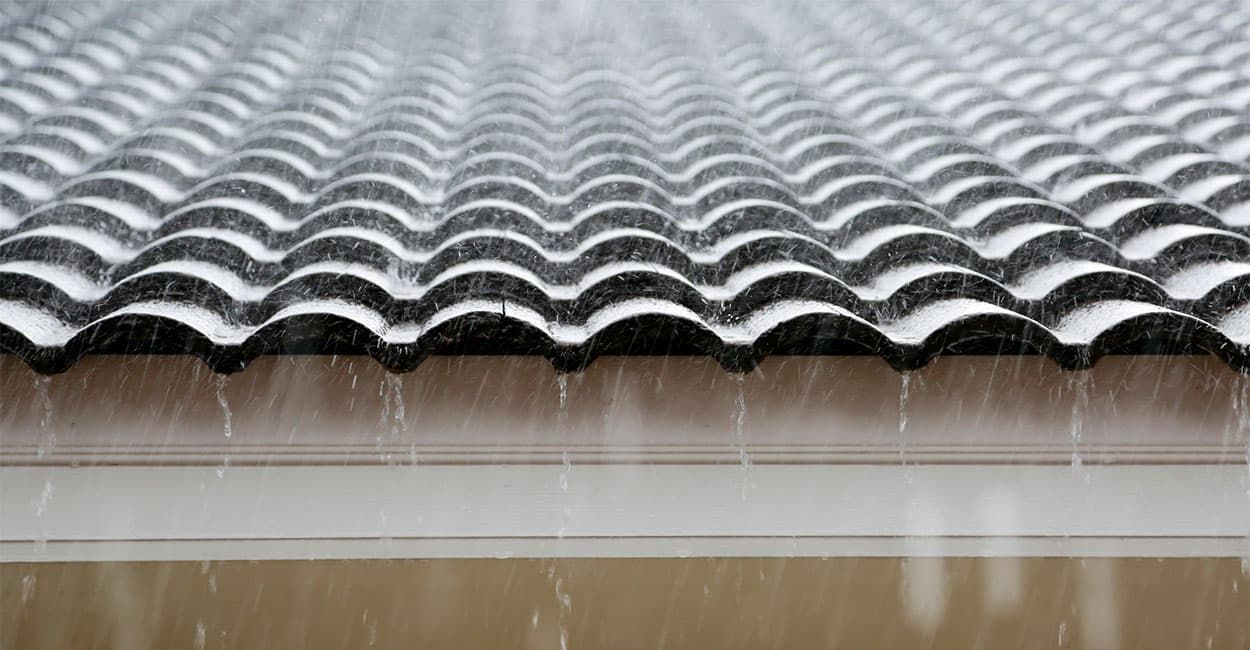
Common Materials Used on Low Pitch Roofs
Not all roofing materials are suitable to be used on low roof pitches, whether a material is suitable or not depends on the durability, life span and other aspects. The most effective and popular roofing materials for a low-pitch roof are as follows:
ROOFING FELT
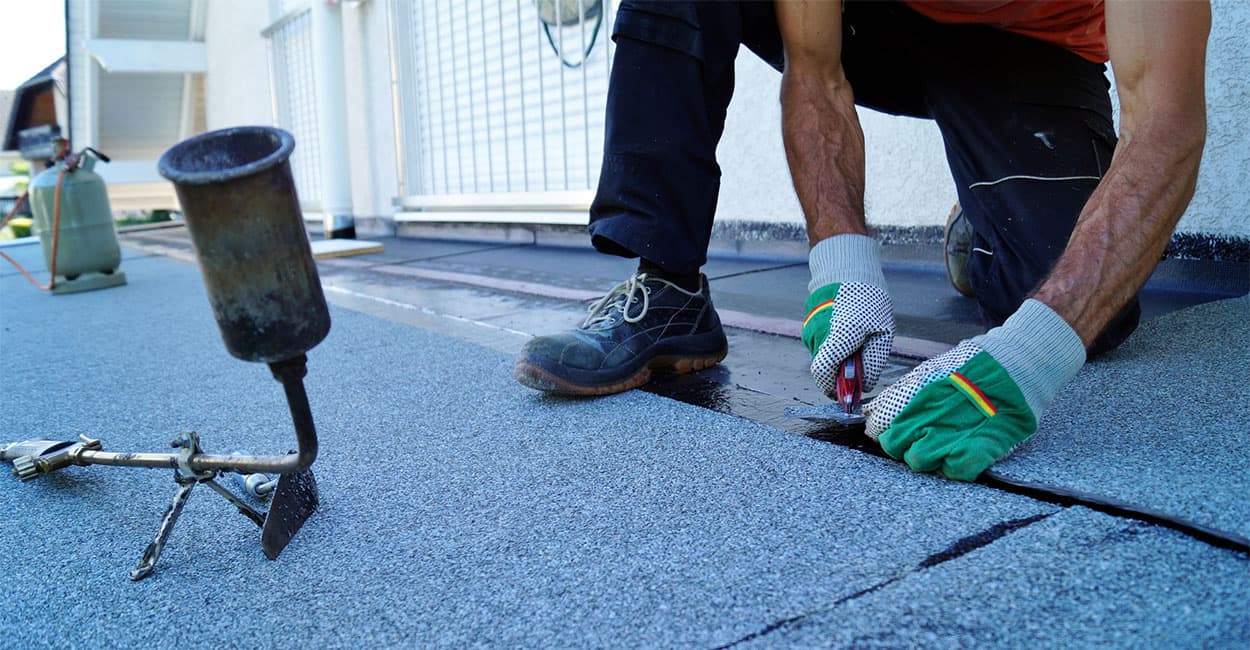
Roofing felt is a very cost-effective roofing system when it comes to low-pitch roofs. Comprised of a breathable base that has been made out of natural or synthetic materials and then saturated with a protective coating such as bitumen, roofing felt can be cut down in size to recreate the overlapping effects of roof tiles or slates, or alternatively, can be laid in larger, longer lengths.
Pros:
-
Available with a self-adhesive application option
-
Anti-freeze properties in cold climates
-
Extremely Lightweight and easy-to-install
Cons
-
Potential fire hazard
-
Fragile, can tear easily
-
Susceptible to puddling in the rain if not fitted correctly
SLATE TILES
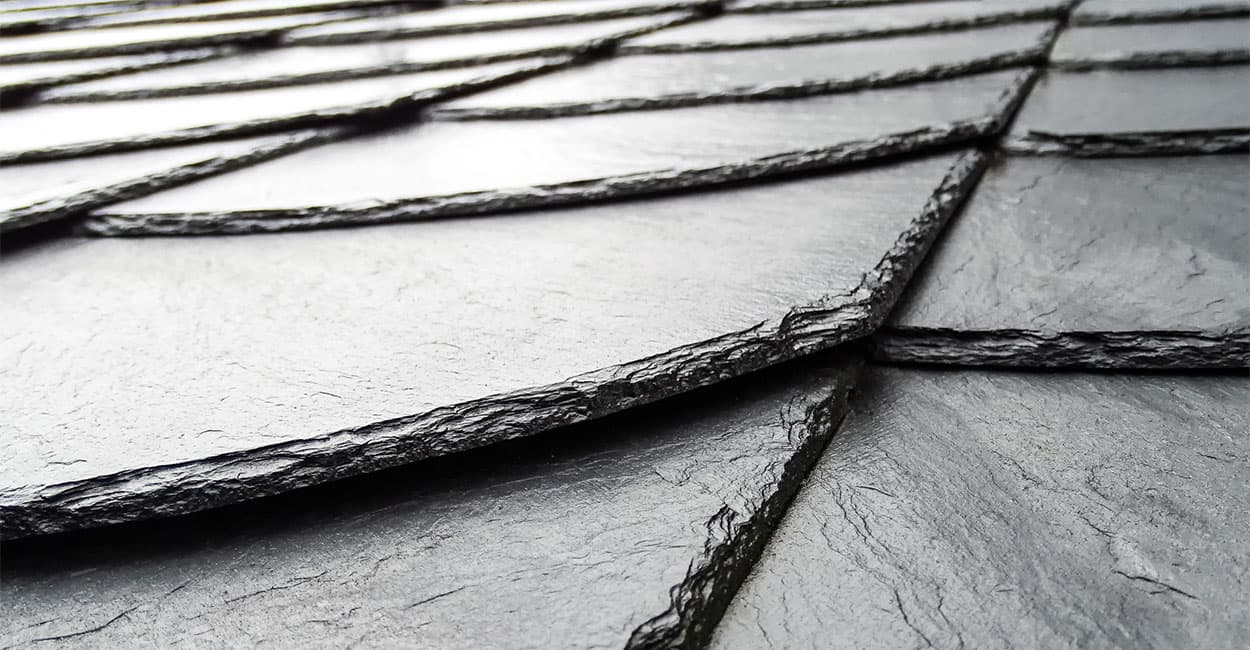
Slate roof tiles are favoured for their durability and kerb-side appeal and are a highly sought-after choice for both high and low-pitch roofs. When it comes to roof slates on a low-pitch roof, the best method of installation is to use the single-lapping method, as it results in a flusher and more flat surface. Single lapping also has better water drainage properties when compared with double lap tiling.
Pros:
-
100% natural and attractive material
-
Good longevity with a lifespan of up to 100 years
-
Environmentally friendly
-
Great fireproof properties when compared with other roof tile materials
Cons:
-
Slate tiles are one of the most expensive roof materials
-
Slate by nature is a heavy material and so supportive weight-bearing battens are required on your property in order to keep your roof risk-free.
-
Despite the longevity of the material, roof slates as an individual element are actually very fragile and unless installed correctly, can fall bit by bit.
CLAY TILES
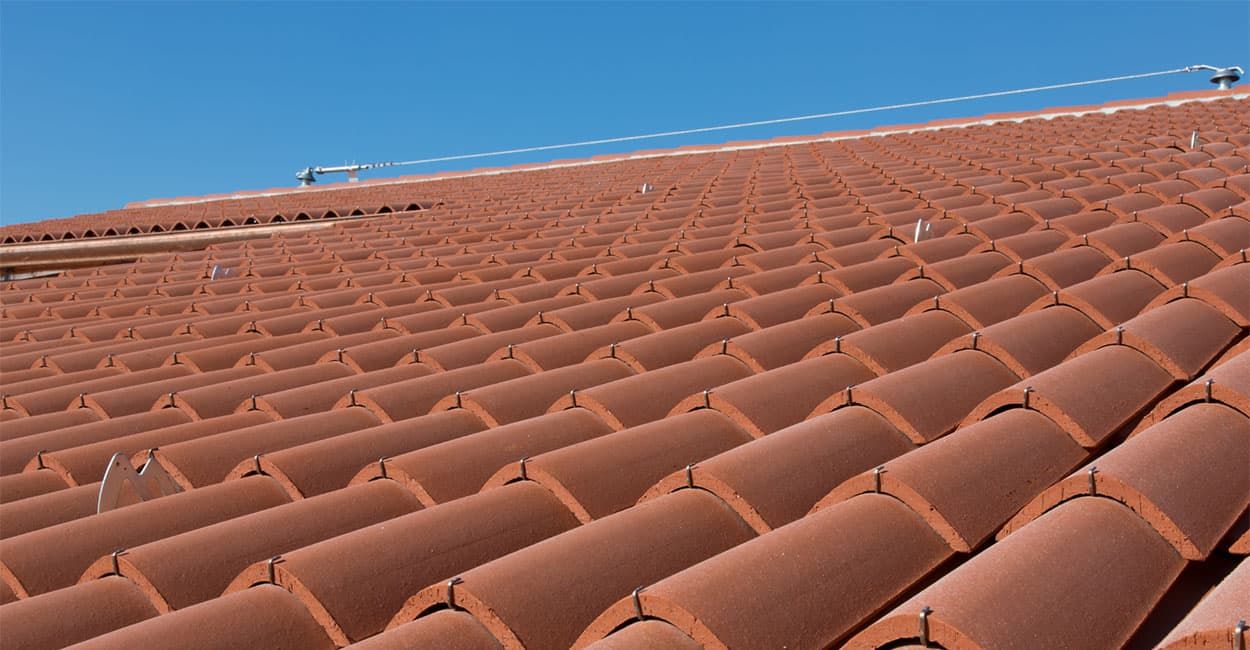
Clay tiles are a traditional roof material that also are consistent in their colour and size. Plain tiles can be installed down to a pitch as low as 35°; however, for low-pitch roofs, tiles can be manufactured as "interlocking tiles" and can be installed at a minimum pitch of 15°, making interlocking tiles best suitable for low pitch roof solutions
Pros:
-
Aesthetically appealing
-
Colour consistency for uniformity
-
Can endure harsh weather conditions
Cons:
-
Heavy and require a solid sun structure
-
Can take longer to fix into place due to their fragile composition - leading to higher labour costs
-
More expensive than other roof tiles
METAL ROOFING SHEETS
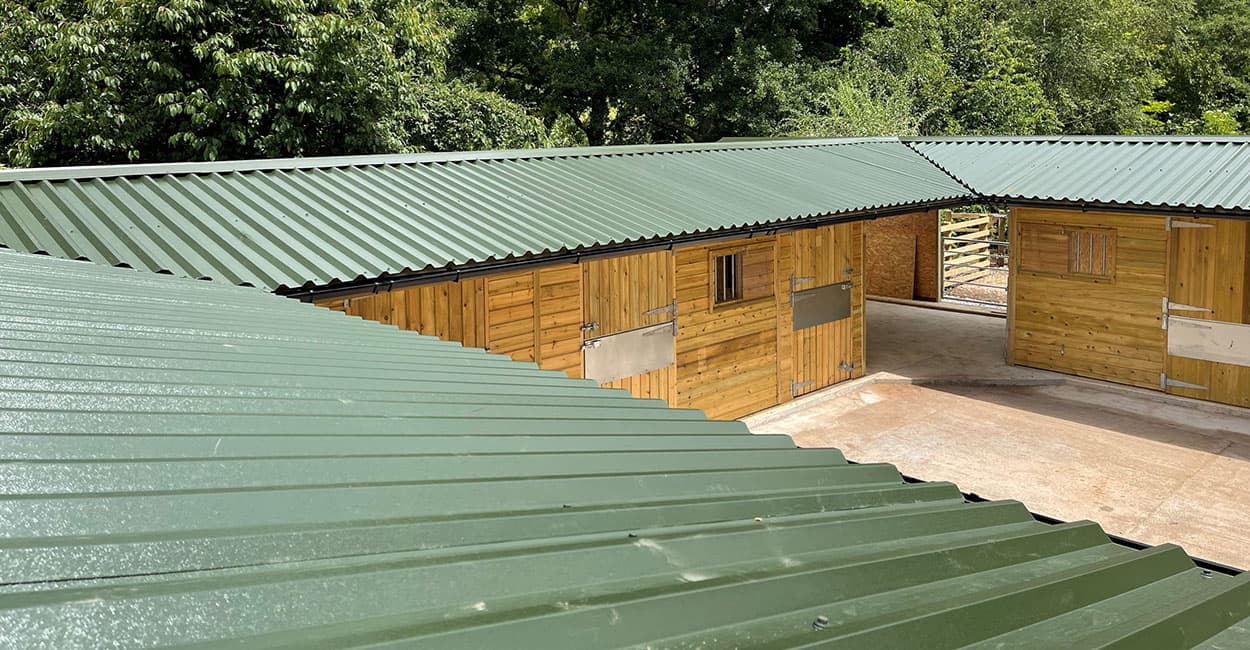
Metal Roofing Sheets are a low upkeep, high-quality low pitch roof solution that are available in a range of profiles, colours and coatings. They can be built to a minimum pitch of 4 degrees (box profile), 6 degrees (standing seam). 10 degrees (corrugated) and 12 degrees (Tile Form) making them the ideal choice to create a low-pitched roof.
Pro:
-
Low-upkeep
-
Strong and durable, with a lifespan of 40+ years when coated
-
1-meter cover when lapped
-
can be cut to custom lengths
Con:
-
Can dent with heavy downward impact
-
Can be noisy in heavy rain
-
Best suited to agricultural and commercial builds as opposed to Domestic extensions
Another benefit to metal roofing sheets is that they're available in Tile effect sheets too - these create the traditional look of clay tiles but with all the benefits of metal sheeting. They can be fitted on low roof pitches (recommended minimum pitch of 12 degrees) and can be cut to specific lengths to accommodate any roof size.
As well as domestic extensions, tile effect sheets are suitable for agricultural, domestic and commercial builds.
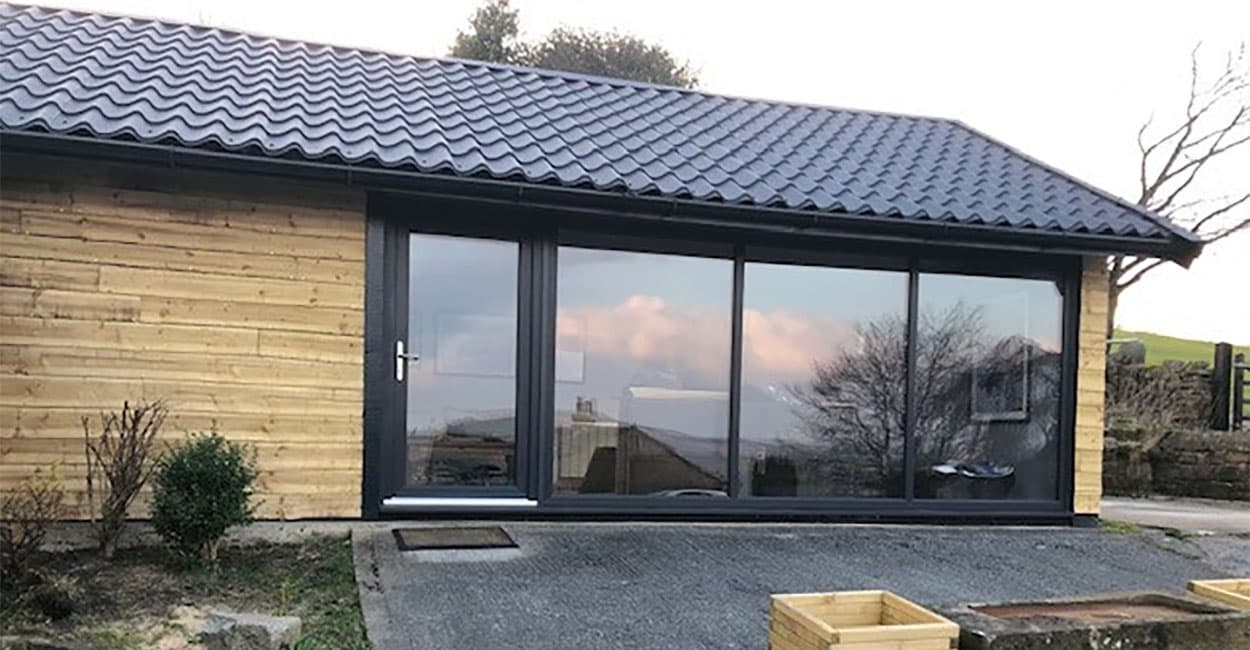
CONCRETE PANTILES
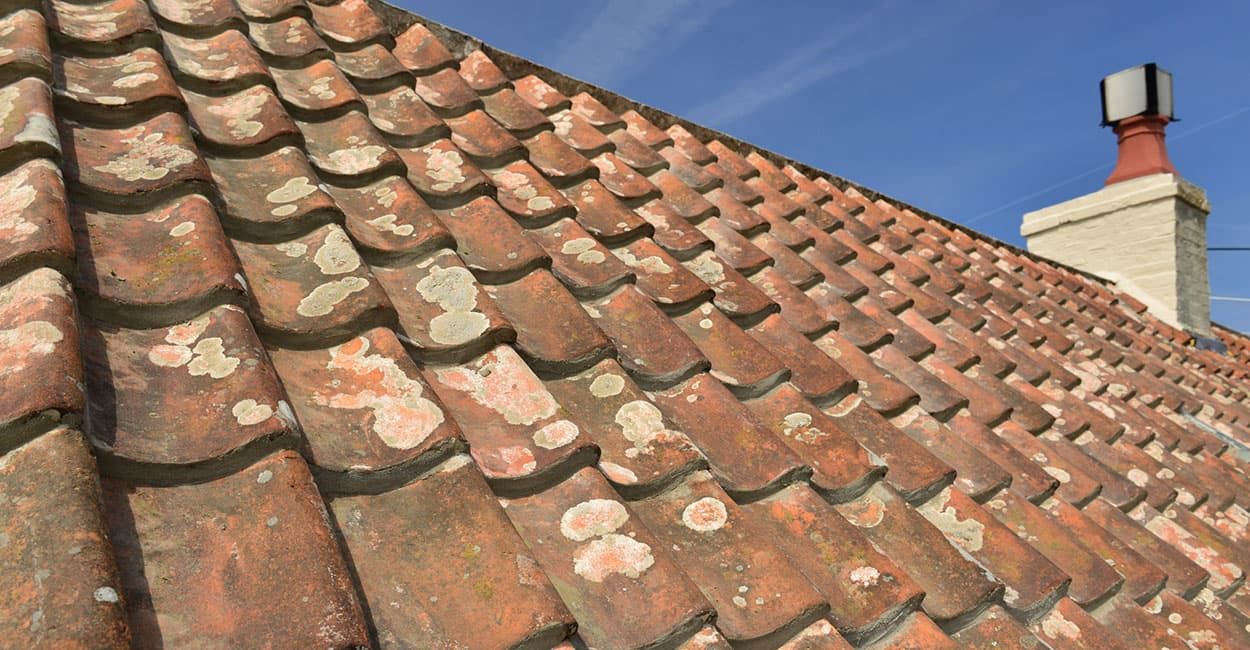
Concrete tiles have been used as an alternative to traditional roof materials for a number of years and work at a minimum pitch of 15 degrees when us as a low-pitch rooftop solution.
PRO:
-
No need for protective treatments
-
Environmentally friendly materials
CON:
-
Heavy - difficult to install
-
Easily breakable
-
Poor weather resistance and do not age nicely
The cost of concrete roof materials comes in at around 20% cheaper than its clay counterpart, making them an economic choice in comparison.
Best suited to homes that want to replicate the look of a traditional tiled roof without the cost. Concrete tiles are hard-wearing with a lifespan of around 35-50 years.
POLYPROPYLENE ROOF TILES
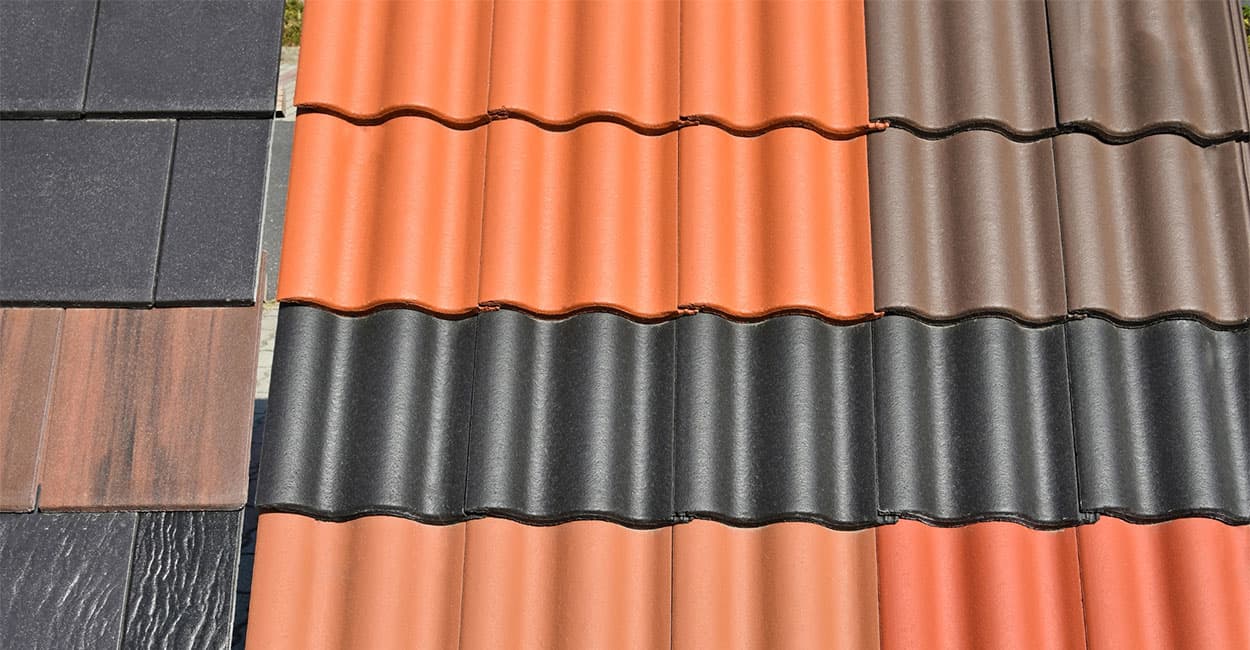
Plastic roof materials are one of the cheapest alternatives on the market, and due to their plastic polymer composition, they will have a long life span - however, it is unknown at the moment just how long they will last, as they are a reasonably modern building material.
Pro:
-
Available in a variety of colours
-
Low-cost
-
Lightweight and easy-to-install
Con:
-
Low-insulation properties
-
Unknown longevity as they are a relatively new material that isn't as strong
-
Not an environmentally friendly material
Main Considerations
COST
If opting for a low-pitch roof there are potential financial benefits. Where less material and accessories are required in order to fit the roof (as the low pitch requires a smaller area) there would therefore be less cost in general for labour and materials.
MAINTENANCE
Tiles, slates and especially metal roof sheets make for low-pitch roofs that are also very low maintenance. With tiles and slates, individual pantiles may become damaged but can be easily replaced individually without affecting the other roof tiles that haven't become defective.
INSTALLATION
To minimise any risk of problems developing on a low-pitch roof, it is important to use a professional building contractor to fit it.
FAQs
WHY IS ROOF PITCH IMPORTANT?
In the uk, a standard range of roof pitching is between 30° and 50° - this range provides good protection from classic British weather conditions (wind, rain and hailstorms) as well as having effective thermal properties and water runoff.
With additions to buildings such as domestic extensions however, steeper roof options aren't always possible and so lower angled pitching comes in to accommodate this.
WHAT'S THE PROBLEM WITH LOW-PITCHED ROOFS?
Due to the nature of the low profile of these types of roofs, they can be more susceptible to leaks as they allow for less water runoff than their high-profile counterparts - resulting in maintenance issues and potential repeat repairs.

